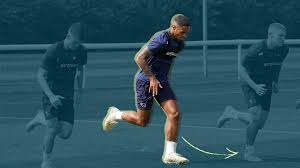Endurance is the foundation of athletic performance across nearly every sport from distance running and cycling to soccer, basketball, and mixed martial arts. But elite endurance isn’t built on long, slow workouts alone. Professional athletes rely heavily on tailored interval training to push their limits, optimize energy systems, and perform at the highest level when it matters most.
This article explores how top-tier athletes use interval training as a strategic tool to develop endurance — and how it’s carefully designed, monitored, and adapted to individual needs.
What Is Interval Training?
Interval training involves alternating periods of high-intensity effort with periods of lower-intensity recovery or rest. Unlike steady-state cardio, interval training targets both the aerobic and anaerobic systems, improving how efficiently the body uses oxygen and how effectively it clears fatigue-inducing byproducts like lactate.
Professional athletes don’t just “do intervals” they do specific types of intervals that align with their sport, goals, and physiology.
1. Individualized Program Design
One of the key distinctions between amateur and professional-level interval training is personalization. Elite athletes undergo physiological testing to assess:
- VO₂ max – maximal oxygen uptake capacity
- Lactate threshold – the point at which lactate begins to accumulate rapidly
- Heart rate zones – to target specific intensities effectively
- Running or cycling economy – how efficiently energy is used at submaximal speeds
Based on these data points, coaches and sports scientists tailor interval protocols to stimulate the exact adaptations the athlete needs whether it’s improved oxygen delivery, better lactate clearance, or enhanced recovery between efforts.
2. Targeting Specific Energy Systems
Endurance is not just about going long it’s about going strong over time. Professional athletes use interval training to develop three primary energy systems:
- Aerobic system (for sustained efforts):
Long intervals (e.g., 4 x 6 minutes at 80–90% max heart rate) help increase cardiovascular efficiency, stroke volume, and capillary density in muscles. - Anaerobic lactic system (for short, high-intensity efforts):
Mid-range intervals (e.g., 6 x 2 minutes at near-max effort) train the body to tolerate and clear lactate more efficiently. - Anaerobic alactic system (for explosive power):
Short sprints (e.g., 10 x 10 seconds all-out) develop speed, power, and neuromuscular efficiency without producing high lactate.
By strategically cycling through these intensities in training blocks, endurance athletes build a complete physiological toolkit.
3. Polarized Training: The 80/20 Rule
Many endurance athletes follow a polarized training model, where:
- ~80% of training is done at low intensity (Zone 1–2),
- ~20% is high-intensity interval work (Zone 4–5).
This approach, supported by sports science research, helps athletes avoid overtraining while still gaining the benefits of interval work. The high-intensity sessions are short, sharp, and purpose-driven, with enough recovery built in to ensure high quality.
4. Monitoring Recovery and Adaptation
Professional athletes train hard but they recover harder. Tailored interval training includes precise rest intervals to promote adaptation without accumulating chronic fatigue. These variables are adjusted based on:
- Heart rate recovery
- Sleep quality
- Mood and energy levels
- Blood biomarkers (e.g., cortisol, testosterone, CK levels)
In high-performance settings, tools like HRV (Heart Rate Variability) monitoring, GPS tracking, and lactate meters are used to ensure training is effective without tipping into overtraining syndrome.
5. Sport-Specific Applications
Different sports require different endurance qualities, and interval training is adapted accordingly:
- Distance runners might do tempo intervals or VO₂ max workouts on the track.
- Soccer players use small-sided games and repeated sprint intervals to mimic match demands.
- Cyclists perform hill repeats or power-based intervals on indoor trainers.
- Combat athletes train in round-based high-intensity circuits that mirror fight scenarios.
Every interval session serves a purpose whether it’s improving repeated sprint ability, boosting sustainable race pace, or enhancing late-game stamina.
6. Periodization and Progression
Professional training plans follow a periodized structure meaning intensity, volume, and recovery are carefully organized across the season. Intervals evolve from general to specific, low to high intensity, and short to long durations.
For example:
- Pre-season: Aerobic base and technique-focused intervals
- Mid-season: VO₂ max and threshold intervals
- Competition phase: High-intensity, race-specific intervals with lower volume
This long-term approach ensures consistent progress without burnout.
Intervals as the Engine of Endurance
Tailored interval training is a cornerstone of endurance development for professional athletes. It’s not about doing more it’s about doing smarter, with laser-focused sessions that develop the exact capacities needed for peak performance.
Whether you’re a pro chasing Olympic gold or an amateur looking to shave minutes off your race time, interval training when guided by science and individual feedback is one of the most efficient paths to next-level endurance.

